#FOAMEd
Text
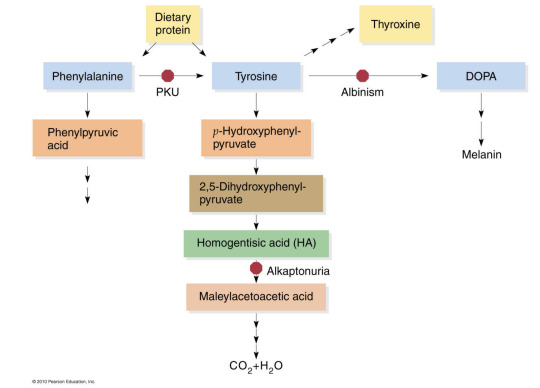
"Phenylalanine is a primary amino acid that is abundant in dietary protein. It's main metabolic pathway yields the amino acid Tyrosine, which is involved in the production of Melanin pigments. Defects of enzymes responsible for interconversion of metabolites in the pathway are the cause of three well-studied, single-gene Inborn Errors of Metabolism: Phenylketonuria (PKU), Albinism (Melanin deficiency), and Alkaptonuria (excess HA)."
(C) 2010 P.J. Russell, iGenetics 3rd ed, (c) 2014 by Steven M. Carr.
30 notes
·
View notes
Text
Myocarditis in Emergency Practice
Myocarditis, an inflammatory condition affecting the heart's myocardial tissues, is a significant cause of sudden cardiac death and dilated cardiomyopathy. With diverse etiologies ranging from viral and immune-mediated causes to toxic exposures, diagnosing and managing myocarditis can be challenging. In this blog post, we will explore the important points regarding the etiology, pathophysiology, presentation, diagnostic testing, and treatment options for myocarditis, with a focus on the perspective of emergency physicians.

Myocarditis can be caused by infectious agents (bacterial, parasitic, viral), immune-mediated conditions, and toxic exposures. Viral causes include enteroviruses, influenza, hepatitis viruses, HIV, herpes viruses, and Parvo B-19. Immune-mediated causes include systemic lupus erythematosus (SLE), scleroderma, and giant cell types. Toxic agents such as doxorubicin, antiretroviral medications, clozapine, and cocaine can also trigger myocarditis.
Myocarditis follows a three-step process. In the acute phase, infectious, autoimmune, or toxic agents directly damage cardiac myocytes. Subsequent myocyte destruction triggers immune system activation and secondary inflammation. In the later stages, the immune system mistakenly attacks the myocytes themselves, leading to progressive myocardial damage.
Myocarditis presents with a wide range of symptoms, necessitating a high index of suspicion for timely diagnosis. Symptoms may include dyspnea, palpitations, orthopnea, and chest pain. Dyspnea is the most common presenting symptom, while chest pain can vary from pleuritic to anginal. Patients may exhibit symptoms of congestive heart failure, ranging from fatigue and peripheral edema to cardiovascular collapse. Skin manifestations can be present in cases triggered by medication exposure.
Diagnostic testing for myocarditis overlaps with other cardiopulmonary evaluations. Electrocardiogram (ECG) abnormalities, such as sinus tachycardia, ST-segment elevations, T-wave inversions, AV blocks, widened QRS durations, or prolonged QT intervals, may be observed. Troponin assays may be elevated, but their absence does not rule out myocarditis. Additional blood tests, including CBC, CRP, and ESR, are often abnormal but nonspecific. Imaging studies like chest radiography and echocardiography can provide valuable information.
TThe treatment of myocarditis primarily focuses on supportive care to prevent further damage to the heart. Stabilizing the patient's ABCs (airway, breathing, circulation) is the priority. Supplemental oxygen and non-invasive positive pressure ventilation may be required for hypoxia or pulmonary edema. Heart failure therapy, including diuretics and nitroglycerin, can be administered if systemic perfusion allows. Cardiac dysrhythmias may necessitate treatment with antidysrhythmic medications. Antimicrobial therapy is required for cases associated with bacterial or parasitic infections. In severe cases, advanced interventions such as intra-aortic balloon pumps, extracorporeal membrane oxygenation (ECMO), or ventricular assist devices (VADs) may be necessary.
Myocarditis presents a complex diagnostic and management challenge for emergency physicians. The diverse etiologies, varied clinical presentations, and overlapping diagnostic tests make timely diagnosis crucial. Supportive care, stabilization, and targeted interventions are key elements of treatment. While further research is needed to refine diagnostic and therapeutic approaches, understanding the etiology, pathophysiology, presentation, and treatment options can aid emergency physicians in effectively managing myocarditis cases.
#emergency medicine#acute care#emergency#health & fitness#biology#emergency physician#foamed#myocarditis
2 notes
·
View notes
Text

Rheumatoid arthritis is a well-known cause of inflammatory polyarthropathy that affects hands, feet, and other joints.
RA also has many potential extra-articular manifestations, as shown in the image.
Reference: FA Figus, et al. Autoimmunity Reviews 2021 (20),
#TeachingRounds#FOAMEd#FOAMRad#internalmedicine#familymedicine#rheumatology#arthritis#rheumatoidarthritis
3 notes
·
View notes
Text
JC: Alternate defibrillation strategies in refractory VF. The DoseVF trial. St Emlyn's
Review of an RCT in NEJM comparing dual sequence defibrillation against antero-lateral and antero-posterior pad positions.
Traditional AL is the least effective. Will this change your practice?
#FOAMed @stemlyns
Early defibrillation is a key step in the management of cardiac arrest patients patients with VF/VT In many cases defibrillation does indeed revert the patient to a better rhythm, but not always. I find that there are two groups of patients that we struggle with. The first is the group whom I do not seem to be able to get out of a shockable rhythm. I defibrillate them, but it seems that they do…
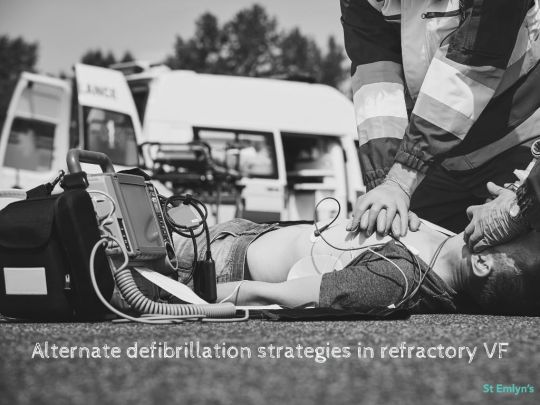
View On WordPress
2 notes
·
View notes
Text


#MedEd#FOAMed#neurotwitter#Neurology#stroke#Neurosurgery#EndNeurophobia#FOAMrad#NeuroRad#neuroradiology#radiology#radres#RadEd#FOAMncc#MRI#medical#biology
1 note
·
View note
Text
i don't know if tumblr has seen this yet but this is honest to god my favorite video
#*slorps the sans foam*#(i need it to survive)#my icon lore#forgive me if this has already been posted but i needed it on my blog#undertale#utdr#sans
31K notes
·
View notes
Text
Cardiopulmonary Point of Care Ultrasound - Book Review
Cardiopulmonary POCUS textbook!
@manoj_wickram reviews this fabulous book by @EchoSoliman and a team of International #POCUS experts.
Buy it now!
We rated it 10/10 #FOAMed #FOAMcc #FOAMus #FUSIC @ICS_updates
Many thanks to Dr Manoj Wickramsinghe for his review of this fabulous POCUS textbook. He is a trainee in Anaesthesia and ICM, based in Leeds, and one of the CCN editorial team.
About the book authors
Editors;
Hatem Soliman-Aboumarie, Marcelo Haertel Miglioranza, Luna Gargani, Giovanni Volpicelli.
The authors and editors of this book include some international leaders and experts in POCUS! As…
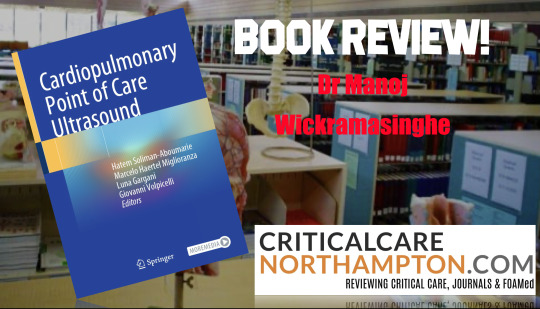
View On WordPress
0 notes
Text
Advancing Construction with Foam Concrete Technology

One of the key advantages of foam concrete lies in its insulation capabilities. The entrained air bubbles create a matrix that enhances thermal resistance, making foam concrete an ideal choice for energy-efficient buildings. Additionally, its sound-absorbing properties contribute to improved acoustics, creating quieter and more comfortable living or working spaces.
0 notes
Text
since I have both adhd and anxiety i took both the creatures and combined them into one species.
I call it the “holy shit”

#artists on tumblr#art#artwork#digital art#drawing#anxiety creature#adhd creature#btw creature#yippee creature#idk creature#it’s in pain#send help#foaming at the mouth#it’s so silly#it screams
19K notes
·
View notes
Text
Q. Do you recognize this rash?
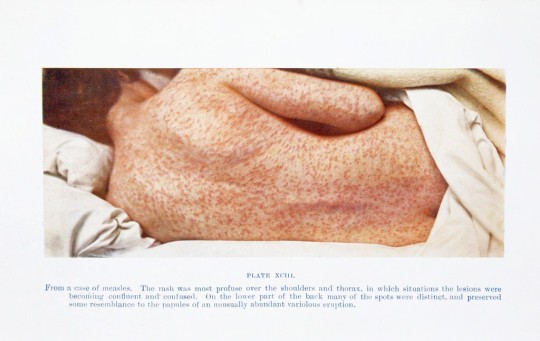
A. Measles (rubeola) is an infectious disease caused by a single-stranded Paramyxoviridae RNA virus. After infection, the virus incubates for ~10 days. First come fever, congestion, conjunctivitis, and a highly infectious "barking" cough that spreads respiratory droplets. 3-4 days later a rash appears. All symptoms intensify for 3-4 days and then resolve. Late winter and spring is prime time for measles infections.
Source: Craft, Fox, Goldsmith, "Measles in Child"; image from Wellcome Collection
5 notes
·
View notes
Video
youtube
Antibiotic Classification: Mechanism of Action
0 notes
Text
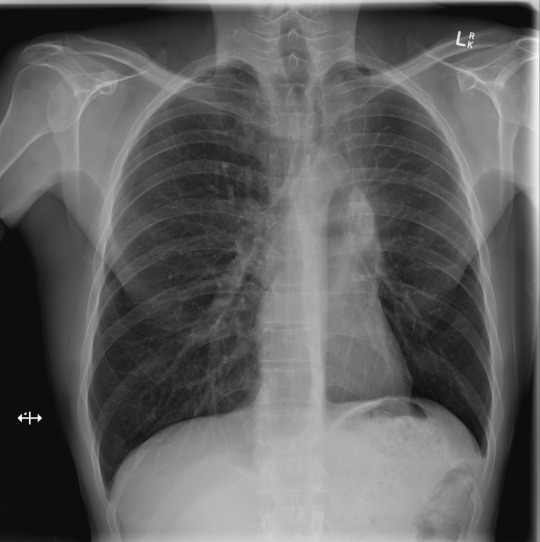
This week we will be showing a case series of chest radiographs. Take a minute to look at the image before you read on. Can you spot the problem?
...
...
...
...
This case demonstrates a mass at the left hilum. In addition, the left hemidiaphragm is elevated, indicating volume loss, and there is air outlining the aortic arch and proximal descending aorta (the so-called "Luftsichel sign," or "air sickle" due to its shape). Findings are classic for left upper lobe collapse (in this case post-obstructive due to the mass). The hyperinflated superior segment of the left lower lobe is what creates the air sickle, as it is situated betwixt the collapsed lung and the aorta.
Case courtesy of Dr Charlie Chia-Tsong Hsu, Radiopaedia.org, rID: 35263
3 notes
·
View notes
Text
Choosing with Intention. Liz Crowe
I've already used some of the tips in this blog. Dr Liz Crowe explains how choosing with intention can help personal work flow and management. This blog will change the way you choose and communicate your intentions. #FOAMed @stemlyns
What you don’t do, determines what you can do
Tim Ferris
One of the most powerful personal lessons I have learned in recent years is every time I say YES to something I am saying NO to something else. Equally, every time I say NO to something, I am saying YES to something else.
It seems so ridiculously logical and easy to do, and yet it is not.
Within the busyness of life, it is very easy to…

View On WordPress
0 notes
Text
Post-Tonsillectomy Bleed: Recognizing, Managing, and Responding
Post-tonsillectomy bleeding is a significant concern in the realm of ear, nose, and throat (ENT) surgery. With a prevalence of 4-8%, it stands as the most prevalent serious complication stemming from a seemingly routine procedure. In this blog post, we delve into the imperative knowledge surrounding post-tonsillectomy bleeds, red flags for detection, timely interventions, and subsequent management strategies.
Recognizing Red Flags
It is paramount for healthcare professionals to remain vigilant for certain indicators in patients who have recently undergone a tonsillectomy. These indicators, often referred to as red flags, include:
Bleeding from the Mouth or Nose: Any patient who reports bleeding from the mouth or nose shortly after a tonsillectomy warrants immediate attention and assessment.
Excessive Swallowing or Bloody Sputum in Young Children: Especially in young children who have recently undergone the procedure, the presence of excessive swallowing or bloody sputum requires careful evaluation.
Significance and Consequences
Post-tonsillectomy hemorrhage, though generally self-limiting, necessitates swift and adept management due to its potential to escalate. It is crucial to acknowledge that while these incidents are infrequent, instances of sudden severe hemorrhage can lead to dire outcomes, such as airway obstruction or hypovolemic shock.
When to Engage ENT Registrar
The involvement of the ENT registrar plays a pivotal role in the management of post-tonsillectomy bleeds. Immediate notification is warranted for patients experiencing active bleeding.
Assessment and Recognition
Bleeding can manifest within the first 24 hours post-surgery (reactive) or later (secondary). Secondary bleeds, often occurring between four to nine days post-operation, remain challenging to pinpoint. Possible causes include infection of sloughy material within the tonsillar fossae, potentially influenced by surgical technique.
Management: Immediate and Overnight
Immediate management mandates prioritization of the airway, along with measures to staunch bleeding and maintain hemodynamic stability. Steps include:
Elevation of the patient to encourage spitting of blood into a receptacle.
Access to suction equipment if required.
Calm reassurance to alleviate patient distress.
Insertion of large-bore intravenous access for fluid and blood tests.
Prompt collaboration with an anesthetist in cases of active bleeding.
Frequent hemodynamic monitoring.
NPO (nil per os) status to prevent oral intake.
Intravenous fluid resuscitation and analgesia.
Application of ice pack to the patient’s neck.
Consideration of intravenous tranexamic acid for its potential to mitigate bleeding.
Hydrogen peroxide gargles (3% solution diluted in three parts of water) for potential slow bleed control.
Progressive Management and Discharge
Continued bleeding or subsequent episodes warrant a call to the on-call ENT registrar and consideration of emergency theater intervention. For ongoing, stable bleeding, utilization of hydrogen peroxide gargles and ice packs can be employed for a short timeframe.
In the event of severe bleeding, when transfer to theater is pending, topical adrenaline application may temporarily alleviate hemorrhage. However, this approach should be pursued under senior guidance.
Post-tonsillectomy bleeding, while relatively infrequent, demands astute recognition, rapid response, and ongoing management. By adhering to stringent protocols and guidelines, healthcare professionals can mitigate the potential complications stemming from this common procedure. Awareness, vigilance, and effective communication among the medical team are vital to ensuring optimal patient outcomes.
1 note
·
View note
Text
erm okay so... the way this argument ends...
because obviously the doctor is about to blame donna for spilling the coffee, but he catches himself, backs off and apologizes. and it's not him catching himself in a "this is a pointless argument because i'm right and you aren't getting that so i give up" sorta way- because in that beat after, he isn't irritated, he doesn't start trying to figure out a way to reiterate his point. it's him catching himself in a "that was the wrong thing to say and i regret that" sorta way.
it's him catching himself becoming another one of the voices in donna's head calling her a screw up.
#and then immediately after this we get The Scene#where he kisses her hand and pulls it to his hearts#foaming at the mouth#doctor who#dw spoilers#fourteenth doctor#14th doctor#donna noble#david tennant#tenth doctor#the star beast#wild blue yonder#doctor donna#doctor who 60th anniversary#orion dw posts
7K notes
·
View notes
